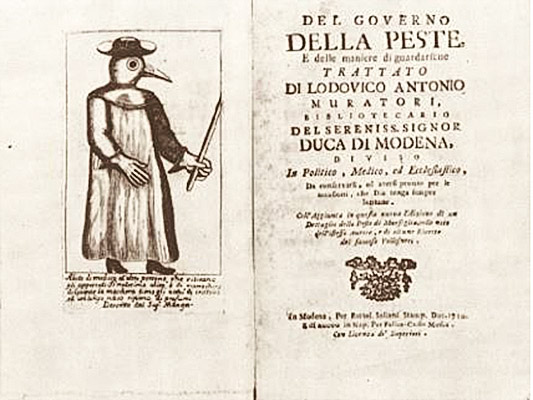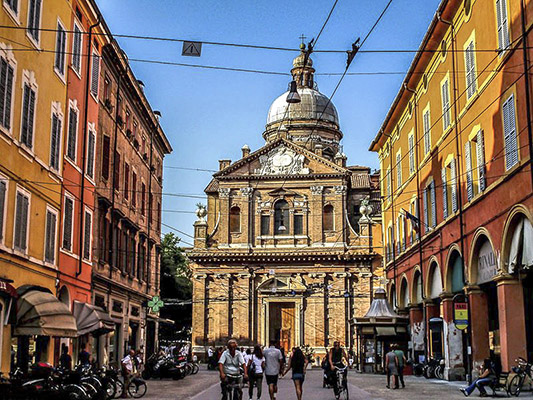St Geminianus
Geminianus was born in Cognento (6 km from the city) in 313. It was a time when Modena, once ‘a flourishing Roman colony’, was in decline.
The second Bishop of Modena from 342 until his death, he was venerated during his lifetime for his supposed power over demons: his fame reached as far as Constantinople, where he went to heal the daughter of the Emperor Jovian.
He died in Modena on 31st of January 397 and was buried in a sarcophagus near the Via Claudia, now the Via Emilia.
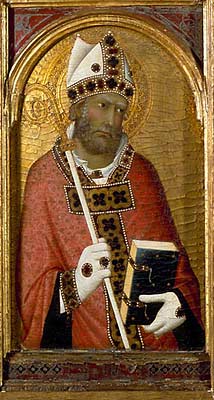

Towards the end of the 11th century, the people of Modena, meeting in plenary assembly, decided to renovate the temple of their patron saint and began the construction of the Cathedral, ‘Domus clari Geminiani’ (House of the Venerable Geminianus).
On 30 April 1106, the body of the saint was solemnly transferred to the crypt of the new cathedral.
The patron saint’s day is celebrated on 31 January, the day of the saint’s death.
In the past, the start of preparations for the festivities was at the beginning of January. The cathedral, also decorated with precious fabrics on the outside, was decorated with festoons on the inside, while the square was prepared for the seven-day market.
For a long time, the saint was also celebrated on 30 April.
At the end of the 18th century, it was decided to limit the patron saint’s celebrations to 31 January.
The patron saint’s day, nowadays
Every year on the 31st of January, the San Geminiano Fair takes place. The old town centre is filled with stalls from the early hours of the morning.
Street vendors sell food and wine specialities, clothes, home accessories and handicrafts, and tens of thousands of people crowd the centre of Modena.
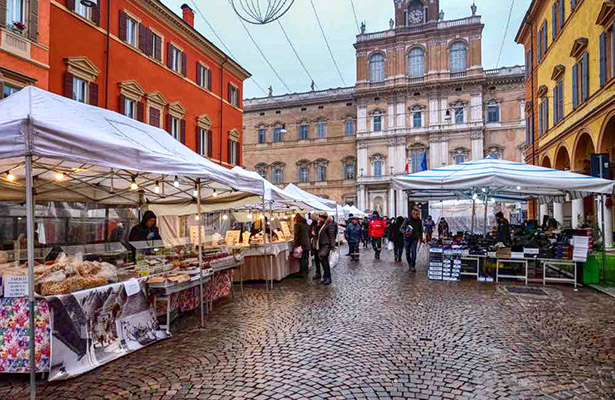
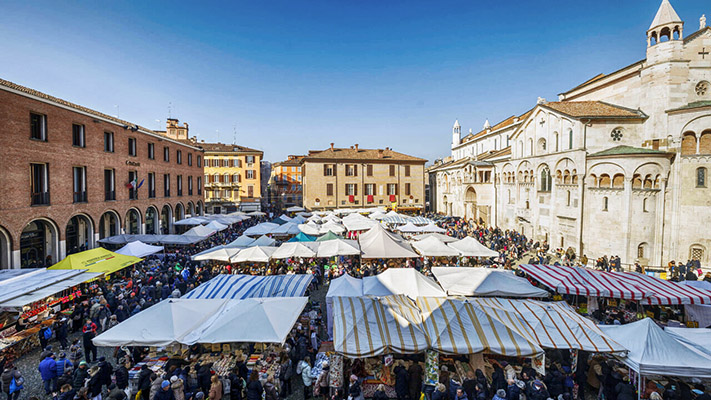
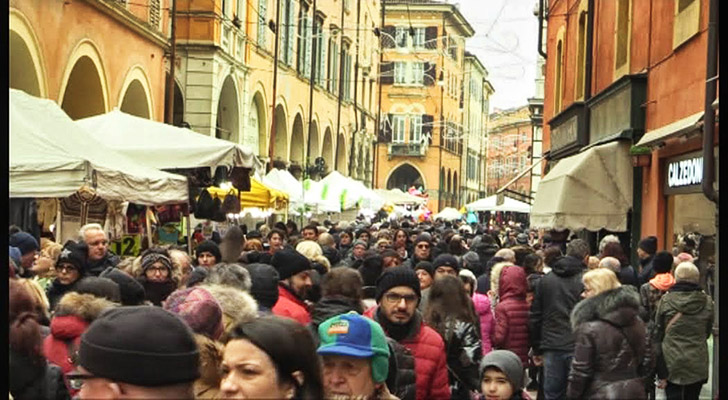
On the patron’s feast day, the Saint’s body is displayed in the crypt of Modena Cathedral where he is buried, inside the sarcophagus that contains his bones reassembled and dressed in liturgical robes, as well as the relic of his arm.
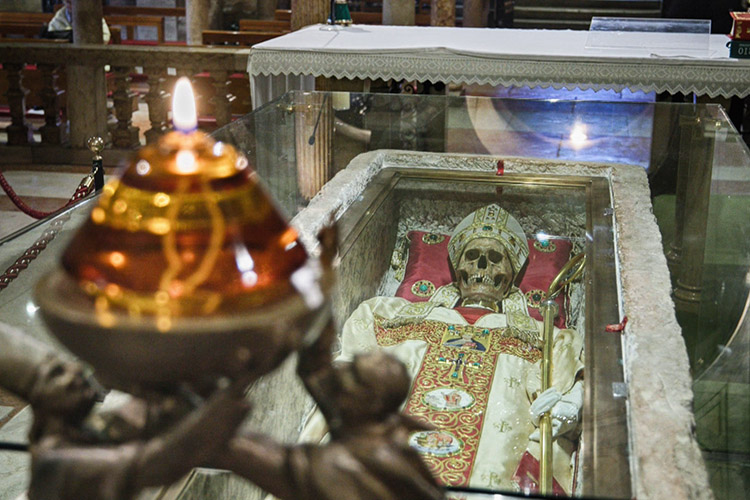
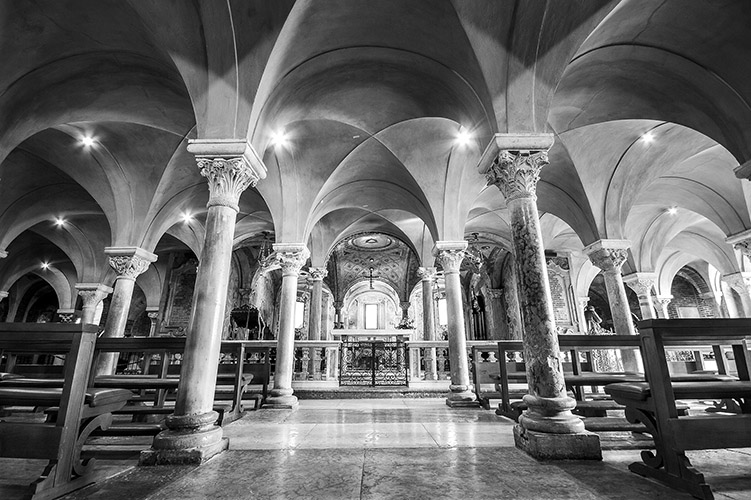
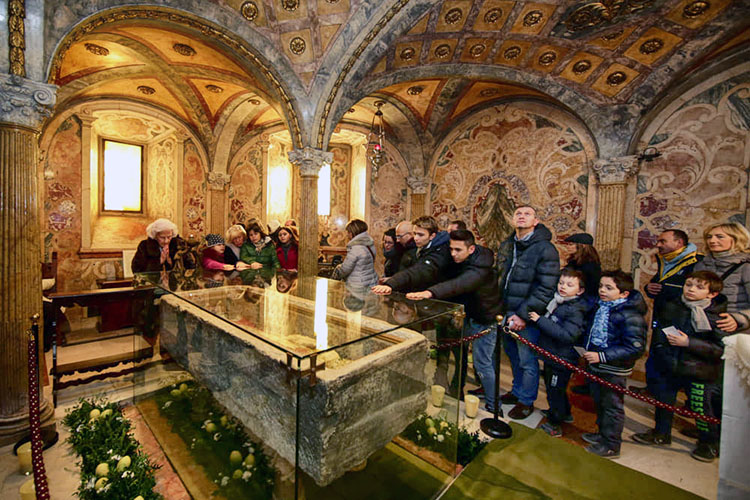
This is also the day of the Corrida di San Geminiano, which is celebrating its 50th edition this year. This is an international running race of 13.350 km, plus two non-competitive races of 3 km (Minicorrida) and 13.350 km (Corrisangeminiano).
For information or to register for the race, visit the Corrida website.
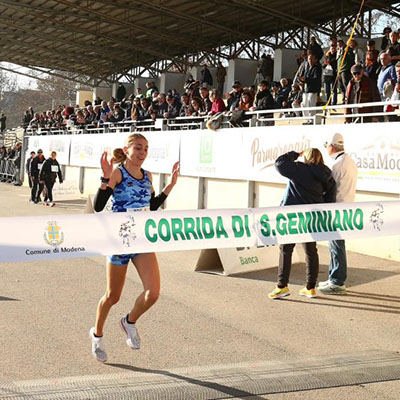
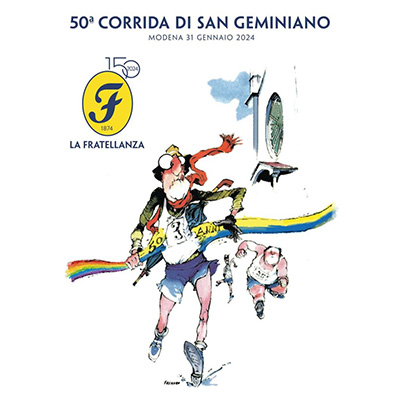
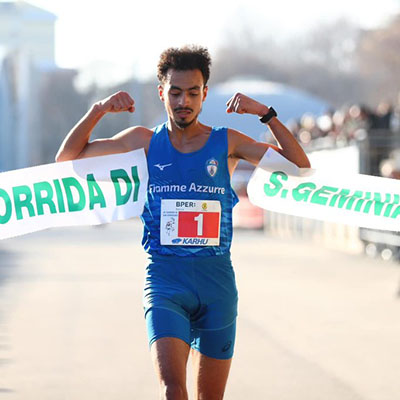
Curiosità
In 451 the Huns, led by Attila, invaded the Modenese countryside.
Legend has it that the citizens gathered around the tomb of St. Geminianus and prayed for days, and when the Huns were at the gates of the city, a thick fog descended, hiding Modena from the invaders and saving the city and its inhabitants.
It is said that in 1511, Charles II of Amboise, leading the French, marched on Modena to conquer it. During the siege, Saint Geminianus appeared to the French leader and ordered him not to touch the city, forcing him to flee.
In 1569, a boy fell from the Ghirlandina, from a height of 108 fathoms, and emerged safe and sound, with only a few bruises: according to legend, the saint saved him by grabbing him by the hair.
The town of San Gimignano takes its name from Saint Geminianus, who is said to protected the town from Attila’s invasion.
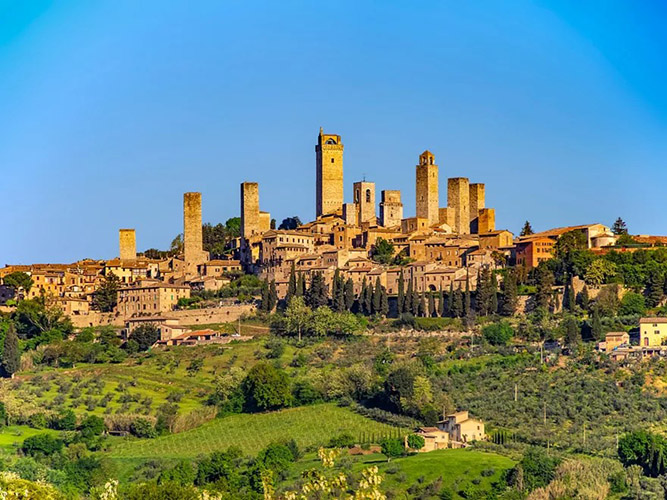
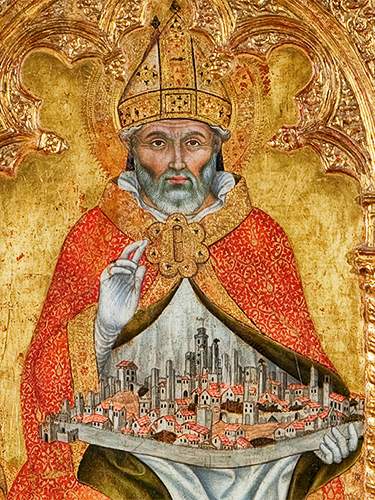
He is also the patron saint of Pontremoli, where a finger of St. Geminianus is preserved: the characteristic Bonfire challenge is held every year in his honour.
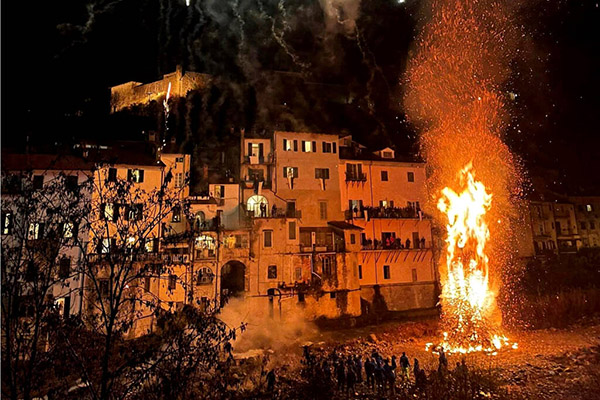
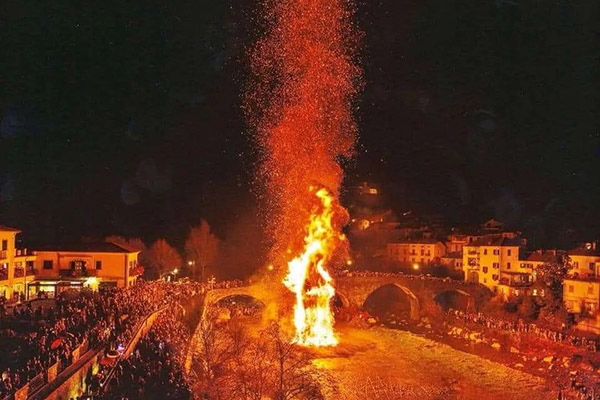
Finally, Saint Geminianus is also the patron saint of Vielmur-sur-Agout in France. It is said that a niece of Matilda of Canossa, sent to marry a local lord, brought a relic of the saint.
In Cognento, where the saint was born, there is the Sanctuary of Saint Geminianus, with the Miraculous Font. It is the scene of many miracles: is said to have restored the eyesight of the mother of the saint, and in the first half of the 18th century, Abbot Vandelli wrote the following: “Wonderful things are told of this fountain, of lepers cleansed, cripples made whole, the blind enlightened, and others healed of various infirmities”.
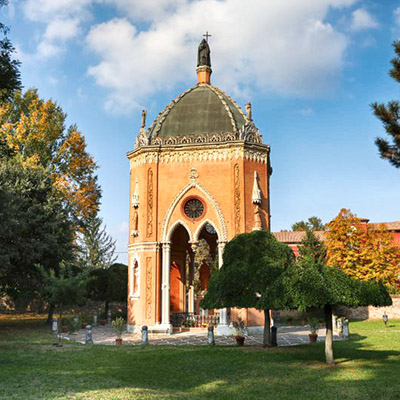
Few people know that Modena also has a co-patron saint: Saint Homobonus, which has never been connected to the city!
In 1630 the plague was raging, claiming over a hundred victims a day in a town of ten thousand inhabitants. The medieval Commune of Modena and Duke Francesco I d’Este made a vow to the Madonna della Ghiara, and on 13 November of that year, after more than four thousand casualties, not a single person died. To fulfil the vow, Francis I had the Church of the Vow built, a few steps from the Cathedral, and Saint Homobonus, who died on 13 November, became co-protector of the city.
